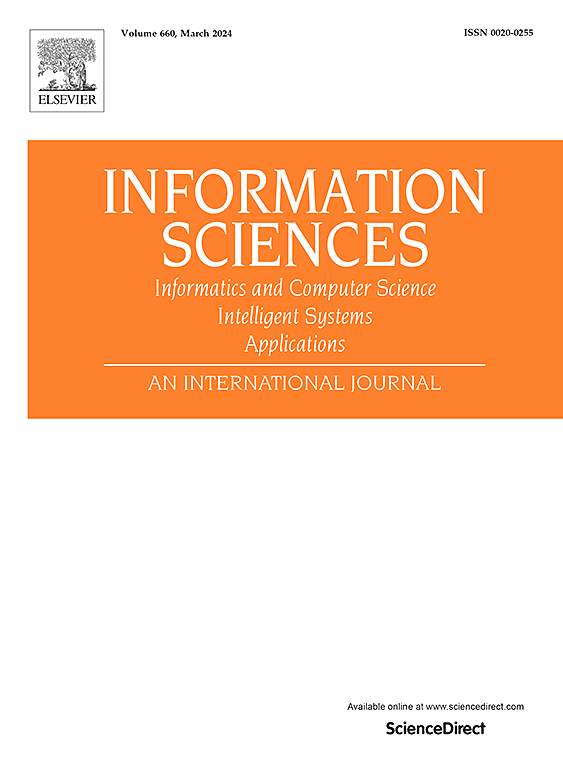基于在线主动学习的演化数据流自适应随机配置网络
IF 8.1
1区 计算机科学
0 COMPUTER SCIENCE, INFORMATION SYSTEMS
引用次数: 0
摘要
随机配置网络(random Configuration network, SCNs)由于其快速增量构建和通用逼近能力的优势,在数据挖掘中显示出巨大的潜力。然而,基于scns的概念漂移数据流分类模型研究较少。所谓的漂移是指随时间变化的数据分布,这可能会降低在历史数据上训练的scn的分类性能。以往的漂移自适应方法是丢弃scn的所有隐藏节点,然后用新的实例学习新的模型,其中有价值的历史信息不能被充分利用。此外,标记所有新到达的实例既耗时又不切实际。为了解决这些问题,提出了一种嵌入在线主动学习的自适应随机配置网络。关键是,开发了一种查询策略,根据实例密度的变化程度及其不确定性选择有代表性的实例进行标记。采用在线更新机制逐个实例增量更新网络的输出参数。为了合理地忘记过时的信息,学习新的概念,动态调整机制在SCN模型中自适应地增加或减少节点。9个数据集的实验结果证实了我们的算法在分类精度上优于6种常用算法。本文章由计算机程序翻译,如有差异,请以英文原文为准。
Adaptive stochastic configuration network based on online active learning for evolving data streams
Stochastic Configuration Networks (SCNs) have exhibited significant potential in data mining, owing to their advantages in fast incremental construction and universal approximation capabilities. However, less researches were done on SCNs-based classification models for concept-drifting data streams. The so-called drifts refer to data distributions changing over time that may degrade the classification performance of SCNs trained on historical data. The previous drift adaptation approach is to discard all the hidden nodes of SCNs, and then learn a new model with new instances, in which the valuable historical information cannot be fully utilized. In addition, labeling all newly-arrived instances is time-consuming and impractical. To address these issues, an adaptive stochastic configuration network embedding online active learning is proposed. Crucially, a query strategy is developed to select representative instances for labeling based on the change degree of instances density and their uncertainty. An online update mechanism is employed to incrementally update the network's output parameters instance by instance. To rationally forget the outdated information and learn new concepts, a dynamic adjustment mechanism adaptively adds or prunes nodes in the SCN model. Experimental results for nine datasets confirm that our algorithm outperforms six popular ones on classification accuracy.
求助全文
通过发布文献求助,成功后即可免费获取论文全文。
去求助
来源期刊

Information Sciences
工程技术-计算机:信息系统
CiteScore
14.00
自引率
17.30%
发文量
1322
审稿时长
10.4 months
期刊介绍:
Informatics and Computer Science Intelligent Systems Applications is an esteemed international journal that focuses on publishing original and creative research findings in the field of information sciences. We also feature a limited number of timely tutorial and surveying contributions.
Our journal aims to cater to a diverse audience, including researchers, developers, managers, strategic planners, graduate students, and anyone interested in staying up-to-date with cutting-edge research in information science, knowledge engineering, and intelligent systems. While readers are expected to share a common interest in information science, they come from varying backgrounds such as engineering, mathematics, statistics, physics, computer science, cell biology, molecular biology, management science, cognitive science, neurobiology, behavioral sciences, and biochemistry.
 求助内容:
求助内容: 应助结果提醒方式:
应助结果提醒方式:


